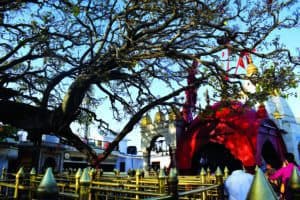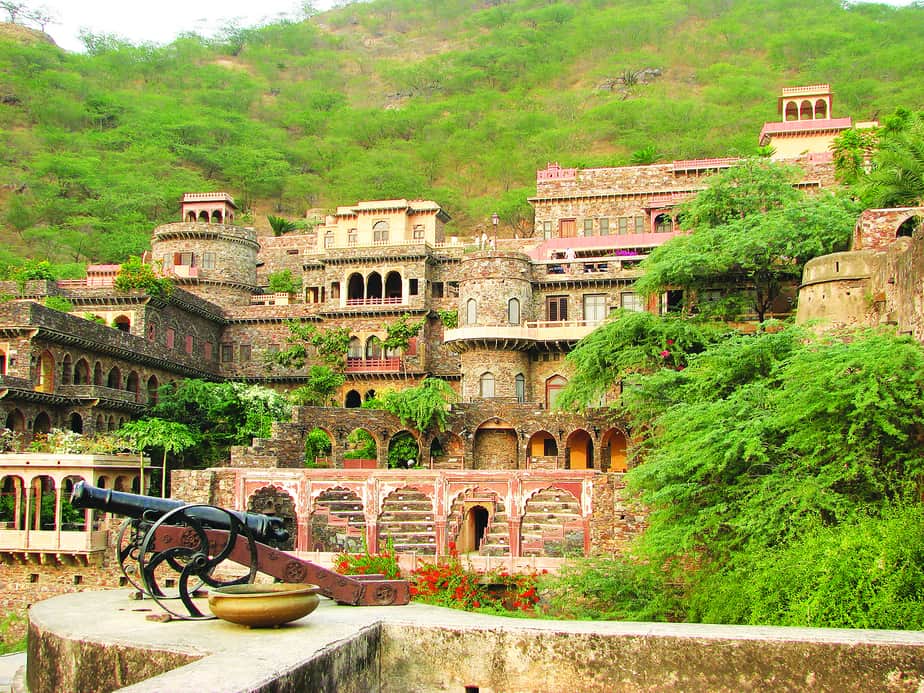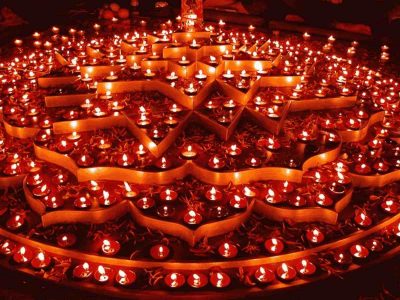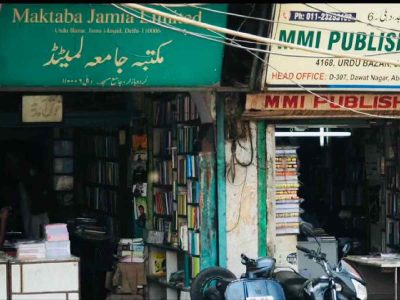With holidays around the corner, here are five places close to Delhi that make you forget the madding crowd
1. Mangar Bani & Sohna
On the Gurugram-Faridabad highway there is an ancient grove called Mangar Bani. Guarded zealously by the local Gujjar community, this is said to be the last sacred grove in the Aravallis. Protected by the spirit of a local sage, Gudariya Baba, there is a temple dedicated to him in the forest. Legend says that a curse would befall the community should a tree be felled. Thanks to this, the forest is now the ‘green lung’ of the region. And it’s a treasure trove for those who love Nature, being home to many species of birds, butterflies, plants and mammals too. Leopards, deers and nilgais have been sighted here.
Another blessing in disguise is that this acts as a water catchment. The water flows to the picturesque Damdama Lake in Sohna (just a 50-minute drive from Mangar). Here simple pleasures of boating and picnic prevail. Sohna also has an ancient Shiva temple built by Bhai Lakhi Shah Vanjara, a devout and brave Sikh who risked his life by cremating Guru Tegh Bahadur’s body by burning his home. Among the more historic structures is Shah Nizam ul Haq Masjid in ward No. 4, Khatiqwara mohalla near the gurudwara. An inscription dates this to 1461. It is also said that educator Sir Syed Ahmad Khan’s grandfather is buried here. Some also say that it was the site of a temple. Decorated Islamic arches, floral patterns and Arabic inscriptions, the red sandstone structure also houses other tombs.
2. Neemrana Fort, Rajasthan
A 15th century fort turned into a luxury hotel, the 11-tiered Neemrana Fort-Palace is known as a lavish wedding destination. But that’s not the only reason to visit it, this is the place to enjoy zip-lining (pulley suspended on a cable), camel cart and vintage car rides in the nearby village. There is an 18th-century stepwell too in the area. The hanging gardens, spa and cultural performances on the weekends are more pleasurable activities here.
The fort dates to 1464 and was the third capital of the descendants of Prithviraj Chauhan III. They had fled from Delhi in 1192 after being vanquished by Muhammad Ghori. They also did not bow to the British and lost their land to Alwar, Patiala, Nabha and others. A crumbling façade forced Raja Rajinder Singh of Neemrana to move to Vijay Bagh in 1947. For 40 years he tried to find takers for this crumbling structure, but it was only in 1986 that help came. Restoration work began and in 1991 Neemrana Fort-Palace opened its royal doors with a raised façade and 15 livable rooms. Neemrana won the INTACH-SATTE award for restoration & tourism in 2000. In 2004, Neemrana was nominated for the Aga Khan Award. By 2008, the luxury fort hotel had 72 rooms, rampart gardens, pool, an amphitheatre, hanging gardens with a salon, a restaurant with a roof-top garden, conference rooms and special suites.
3. Sat Tal, Uttarakhand
Past rolling greens, a little ahead of Bhimtal, lies Sat Tal, named after its seven freshwater lakes. Mysteriously interconnected, the seven lakes are part of the region’s fragile ecosystem. The seven lakes are: Purna Tal, Ram Tal, Sita Tal, Laxman Tal, Nal Damyanti Tal, Sukh Tal and Garud Tal. The clear emerald waters, the unspoiled environment make the area a nature lover’s hideout. It is said to be one of the unpolluted freshwater biomes in the country. It is home to around 500 species of birds, almost 20 species of mammals, over 525 species of butterflies and over 11,000 species of moths, beetles, bugs and insects. The area is rich with plants ranging from orchids, rare climbing plants, ferns, lichens, fungi to medicinal herbs and shrubs. Sit back and forget the world. And when you are done, walk or bicycle to discover more green spaces.
On the outskirts, there is the Sat Tal Mission Estate and Methodist Ashram, which has been around since 1937. A sign clearly says, ‘Please use this place only for meditation and prayer’. This was established by an evangelist and missionary E Stanley Jones (1884-1973) and was once a tea estate. St John’s Church is part of this ashram.
For those who like high altitudes, there is Garg Parvat which is the source of river Gargi; Hidimba Parvat named after the demon Hidimba from Mahabharat. And there is Vankhandi Ashram. Monk and environmentalist Vankhandi Maharaj created this sanctuary for wild animals around the hill. Watch the shapes and you might find something which resembles like a cobra—that’s the hill of Karkotaka, named after a mythical cobra, and has a snake temple.
4. Kasol, Himachal Pradesh
Most call Kasol a ‘mini Israel’ but for first timers, this is the lovely, rural, untouched part of the country. With a salubrious climate and lust verdure, Kasol has been wooing trekkers and leisure holidaymakers. With the clean waters of Parvati river flowing through the valley, Kasol lives a happy life. Actually hippie life too, as you find a lot of Israelis, Germans, Italians and other foreigners here. While you have a chance, get a taste of their culture and cuisine in the many cafes located there. Some recommend trying the chicken lafa, hummus, eggplant dishes; others say go for shakshouka, falafel, schnitzel, bourekas. You can also dig into German desserts at the bakeries, fresh juices, pizzas and pasta.
You also see a lot of backpackers here, as this is their base before trekking to Sar Pass, Yanker Pass, Pin Parbati Pass and Kheerganga. If treks are not your thing, walk to Chalal, which takes barely 30 minutes. Look for the rustic and the untouched, then do go to the village of Malana. The people say they trace their lineage to Alexander’s army. Tosh is another village where the lives are untouched by modernity. The famous Manikaran gurudwara is a mere 6 km away. The scenic beauty and the warm hospitable villagers make it a pleasant holiday.

5. Anandpur Sahib, Punjab
Sacred for the Sikhs as the Khalsa was formed here, Anandpur Sahib is truly a city of bliss. Wide roads, the river flowing through the fields, landscape dotted with gurudwaras and forts, the sacred space is not in any hurry. While the town enjoys solace the year through, it’s only during the three days of Hola Mohalla that the entire state of Punjab practically camps here. Home to one of the five takhts, Sri Kesgarh Sahib, a langar here is one of the most delightful meals. There is a small shopping area where you can buy a dupatta for just Rs100 and juttis as cheap as Rs 150.
In the town itself, the Virsat-e-Khalsa museum is a must-visit to see the amazing architecture and the excellent use of multi-media to showcase history. There is the Sri Dasmesh Academy. Do make time and grab a cup of tea from the street vendors and enjoy it at the Panj Piara Park where the world’s tallest khanda is installed (at an estimated height of 70 feet). Walk barefoot in the fields, sit by the river, enjoy the sunset and sunrise, listen to the chirping birds and see the waddling ducks. As night sets in, do try the fresh tandoor ki roti at any of the dhabas. During the day, you can’t miss the glass of fresh orange or sugarcane juice on the streets as well as the highway. Take a stroll near the canal for sure or drive down to Nangal dam or up to Naina Devi. There are also the Ropar wetlands where birds and plants enthrall nature lovers.
Ambica Gulati





